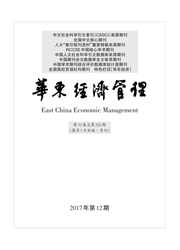

 中文摘要:
中文摘要:
文章应用超效率DEA模型计算资源环境效率衡量2009-2014年"丝绸之路经济带"沿线71个地级及以上城市的可持续发展能力,并选取面板Tobit模型对资源环境效率的影响因素进行实证分析。结果表明:"丝绸之路经济带"沿线城市可持续发展能力不断提高,但大多数城市仍较低,且各城市之间差距较大;政府财力、产业结构升级、科技进步、教育投入对资源环境效率有显著的正向影响;经济外向度、人口密度对资源环境效率有负向影响。基于此,提出促进"丝绸之路经济带"沿线城市可持续发展的政策建议。
 英文摘要:
英文摘要:
This paper calculates coefficients of the use efficiency of resources and environment by using super-efficiency DEA model toevaluate the sustainable development capability of China's 71 prefecture-level and above cities along the Silk Road Economic Belt from2009 and 2014. Then the panel Tobit model is selected to empirically analyze the influencing factors of the coefficients. The results showthat the urban sustainable development capacity of cities along the Silk Road Economic Belt is continuously improved, but most cities arestill low and have large gaps between cities; the financial power of government, upgrading of the industrial structure, scientific and techno-logical progress and educational investment have significant positive effects on the coefficients; the radio of foreign trade and populationdensity have negative effects on the coefficients. Accordingly, this paper proposes policy recommendations on promoting the sustainabledevelopment of cities along the Silk Road Economic Belt.
 同期刊论文项目
同期刊论文项目
 同项目期刊论文
同项目期刊论文
 期刊信息
期刊信息
